What To Put Under Gun Safe On Concrete?
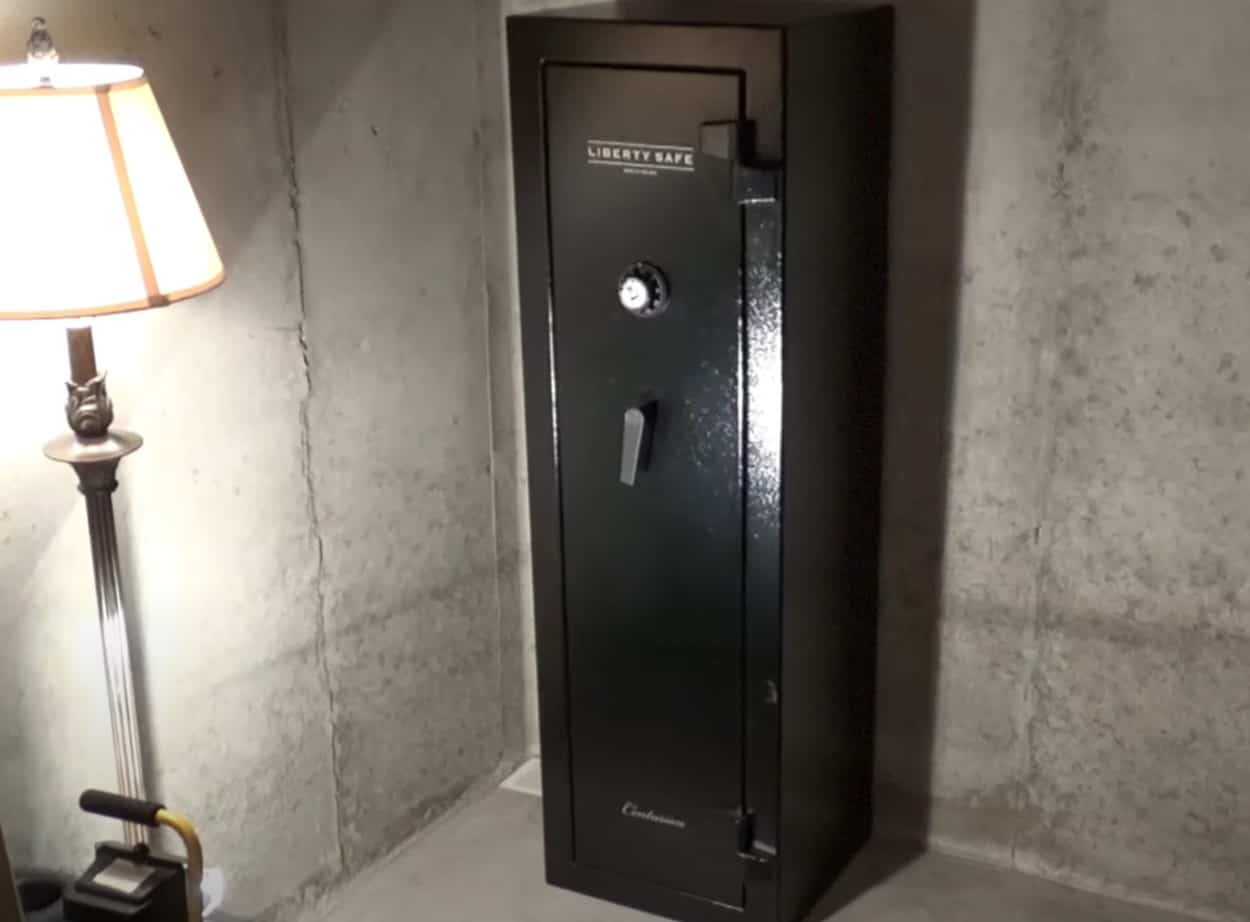
When installing a gun safe in your home, you should consider where you will install it. You should also consider the type of surface that you want to install it on. Depending on the surface, some need more preparation than others.
There are many surfaces that people can use for this purpose, but concrete is one of the most popular options because it provides an excellent level of protection against fire, water, and burglars.
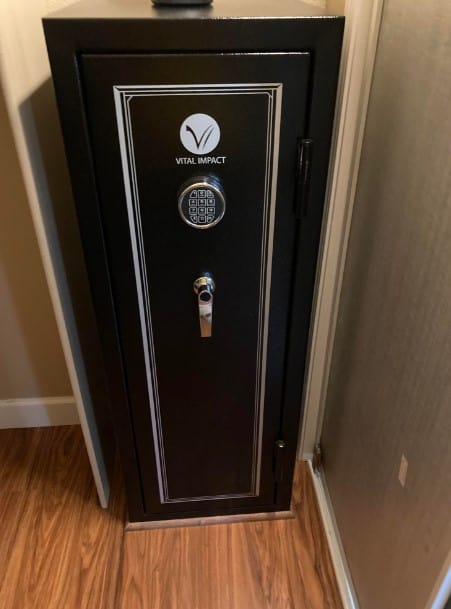
Can You Install A Gun Safe On Concrete Floor?
Floors made of concrete are obviously strong. These floors can accommodate extreme weight, even the heaviest gun safes when used as a foundation for a house without a crawlspace or basement. This makes them a great choice for safe installation.
Yes, it’s possible, but you’ll need to make some modifications first. Directly setting a gun safe on top of concrete without a barrier can cause moisture issues. Gun safes rust and weaken over time.
You can use wood, carpet, or rubber if you want your own custom base. They all have their pros and cons. Choosing the right material depends on how handy one is and how much money one has to spend.
If you don’t want carpet, go for rubber or wood. There are a lot of different rubber floor mats. Installing a gun safe properly requires choosing which one to use. In addition, you can help your gun safe last a long time by installing a moisture barrier at the base.
Can You Put A Gun Safe Directly On Top Of Concrete?
Freestanding gun safes can be dangerous to store directly on concrete. Especially in basements, concrete can absorb and release water like a sponge over time. Extra moisture is trapped under a safe in a basement with high humidity.
Eventually, the integrity of the safe will begin to deteriorate due to rust. It is recommended to place a barrier between the concrete floor and the under bed gun storage gun base in this situation.
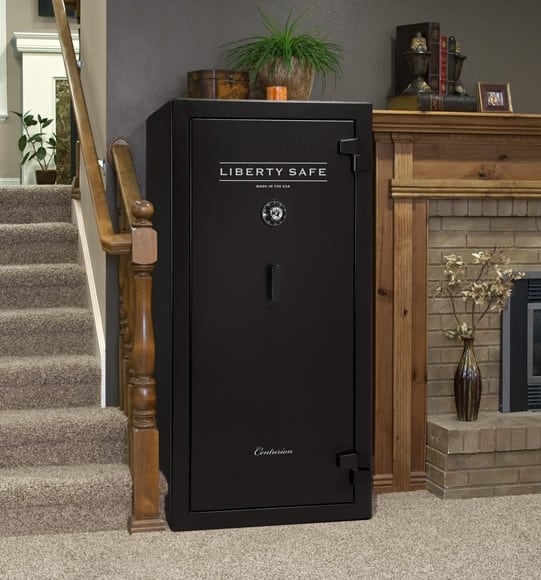
What To Put Under A Gun Safe On Concrete?
A location such as a basement contains a high level of humidity, which is a factor in gun safe location. Therefore, when the gun safe is located in the basement, you should not put it directly on the concrete.
Especially when it’s placed directly on concrete, the bottom of the gun safe is prone to rust and moisture. When the level of humidity increases, concrete itself releases moisture.
The moisture at the bottom of the safe can be removed in various ways. The best way to protect a gun safe is to put hard surfaces underneath that don’t produce moisture. Here are some examples.
1. Ice Hockey Pucks
Gun safes can be raised with the help of ice hockey pucks, which come with a hidden function. Four pucks are used at each corner by drilling through each puck and into the floor.
A hockey puck is typically 1″ thick, which allows for ample air circulation. Those who want to use a different color also come in white. They also protect from standing water in shallow spots.
When using only hockey pucks, it is recommended to have additional protection. By using hockey pucks instead of screws, you can ensure that your handgun safe doesn’t tip over and cause damage to the floor, or injury to family members.
Between the gun safe and concrete floor, a gap will be created that will allow free airflow, preventing rust from forming. Remember that any gap between floor and safe can compromise security.
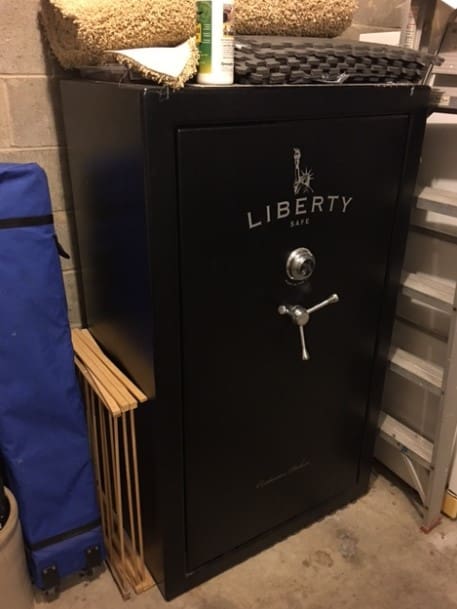
2. Multi-Purpose Rubber Mat
It may cause rust to form at the bottom of a gun safe when it is placed directly on concrete. If you directly place your gun safe on concrete, water can also cause problems. You can solve all these problems by using a 3 to 4-inch rubber stall mat.
Rubber mats that serve various purposes are also available, often used, and sold as gym mats and exercise mats. These mats can also be made into interlocking shapes in case they need to be assembled. Again, these may be easier to customize depending on how big your gun safe is.
You should cut the mats to fit your gun safe since there are different sizes available. Because it doesn’t create any space at the bottom, it can’t be penetrated by a pry bar, just like wood or hockey pucks.
3. Stall Matting
Stall mats are the most durable rubber mats that are easily accessible. These rubber mats are popularly used in horse stalls because they are durable and can be drilled through. These can be ordered online or from tractor supply stores.
A rubber mat makes it easy to bolt your gun safe to the floor. The safe should be bolted down to ensure security and safety and prevent it from tipping over while it is being opened. A rubber stall mat can be used for many years because it serves as a moisture barrier.
4. Sheet Of Plywood
It is possible to custom cut plywood sheets to conform to the safe’s footprint. By using anti-vibration pads, one can raise the nightstand drawer gun safe to allow air to flow. In addition to being used for home appliances such as washers and dryers, vibration pads can also be used for gun safes.
5. Vinyl Flooring
On a concrete floor, vinyl flooring can be used under the gun safe, but wetness and moisture are the main problems. It can be used for the short term. You should consider using rubber if your gun safe has to be placed up to 6 inches off the ground.
6. Carpeted Pedestal
Using a carpeted pedestal, you can raise your gun safe about 3/4 inches above the ground. For example, the carpeted pedestal could be used to place a gun safe in the basement or concrete floor that has condensation and water problems.
Guns can be kept dry from moisture and water by using this device. It also provides you with additional security against tipping over.
7. Lumber
The gun safe can be protected from water and direct contact with concrete by using two pieces of 3 to 4 inches lumber underneath it. It’s possible to bolt the gun safe through the lumber, but it might be pointless with that enormous gap at the bottom.
It is very easy for burglars to cut the bolts of the safe and move it away. Alternatively, wood connected to concrete will produce condensation if the humidity is too high.
8. Pallet
In the short term, a pallet might be the best option. However, it is not the best option for the long run. By maintaining airflow at the bottom, the pallet prevents rust from forming. It is easy to move pallets, and bolting is not necessary.
This reduces the security of the safe’s bottom. Pallets made of wood or plastic are available, but these should only be used for a short period of time; a rubber mat would be a better option in the long term.
You can cover the gun safe with rubber pads at each corner and in the middle as an alternative. If you want to ensure its security, you can bolt it to the ground. Air is allowed to flow freely through the rubber pad at the bottom, preventing condensation and moisture from forming.
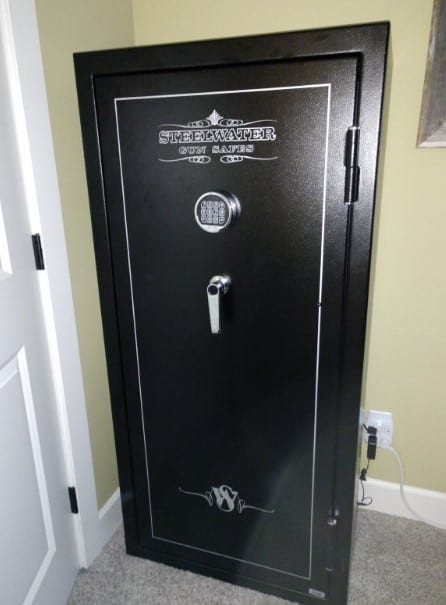
Different Gun Safe Base Comparison
You need to select the material you use under your gun safe carefully. For example, if you want to prevent moisture damage to your safe, protect it with a hard rubber mat before bolting it down.
If you plan to install your safe before sealing the concrete, you can use epoxy. The two methods will help prevent moisture damage to your safe. On the other hand, Carpet is cheap and can be installed well, but there are other issues.
Despite the ease of customizing and building with wood, there are some disadvantages. The most versatile material is rubber, but it is difficult to work with. All of these scenarios are based on the installation of a gun safe on concrete flooring.
Rubber
The best option is to place the gun safe on top of the rubber barrier. There are so many different sizes and shapes of rubber mats that you can easily find something to fit. Also, rubber mats aren’t as expensive compared to wood or carpet.
Anti-vibration and moisture-absorbing properties are among the benefits of rubber mats. Rubber mats also have the highest durability. One great thing about rubber mats is that you can use a thin rubber mat and still get great moisture protection.
Rubber is hard to cut, which is one of its disadvantages. Although this is excellent for security, it can be difficult to customize.
Carpet
A simple solution can be to install a carpet underneath the safe. A gun safe can be fitted under some extra carpet that’s lying around. Certainly not the sexiest or most clean-looking gun safe, but it might not even be noticeable.
Concrete will absorb water, so this is a drawback. Also, carpet can become humid if there is no airflow, so it will never dry.
This defeats the purpose of protecting a gun safe from rust. In addition, any potential flooding will also make the carpet absorb and hold water worse. Finally, it is not recommended to level a gun safe on carpet as it can be uneven.
Wood
Gun safes can be made to look good by using wood underneath. It is possible to customize the size of a platform without much effort. As a quick and cheap way to raise a gun safe off the ground, boards can be an excellent option.
Plywood can be used as a covering over the top of carpet and concrete. The plywood can be easily cut into the shape of the base. This would build a sturdy foundation underneath the safe. However, this would make it very difficult to cut through.
The wood absorbs moisture, but it can be sealed and treated before it does. A disadvantage of wood is its flammability. The integrity of a wood mount will be destroyed if there is a fire. This could lead to even worse problems. Although unlikely, it should be considered.
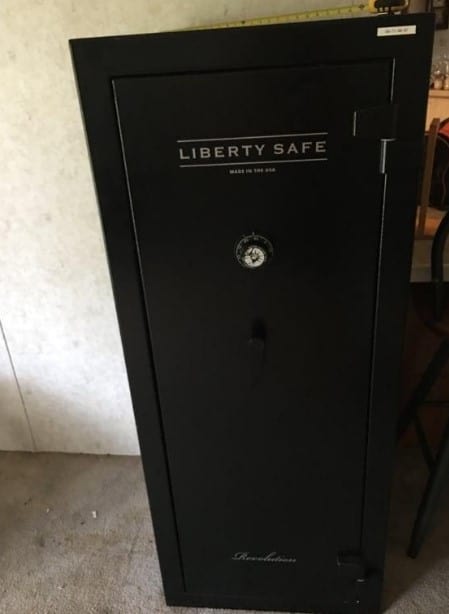
Rubber vs. Carpet vs. Wood: Which One Is Better?
It is generally best to use rubber. Rubber mats provide the most protection between a gun safe and concrete. Rubber coating keeps moisture from absorbing into the gun safe and makes it very sturdy. In addition, rubber mats can provide excellent seals and protection.
Is It Possible To Put A Gun Safe On A Concrete Slab?
It is the best and most permanent option for firearms owners to place their guns safe on a concrete slab. It is safe, secure, and almost impossible for burglars to get into the home when a rubber pad is installed over the concrete slab and bolted down through it.
What Are The Chances Of A Gun Safe Damaging My Concrete Floors?
It is possible to damage a concrete floor if your gun safe is not installed correctly. In addition, you will see a warning not to drill, cut, or core your concrete slab if it is a “post-tension” type.
Thousands of pounds of pressure are exerted on these steel cables that run through these slabs. As a result, cables are dangerous if damaged since they can snap out of the concrete and damage property and injure those around them.
You should be able to drill into your concrete floor if it isn’t a post-tensioned slab. In order to drill through concrete, you need special tools because traditional drill bits will break. The drill, as well as the floor, can suffer damage. To anchor your safe, make the holes using a hammer drill.
Using concrete anchors is also a good idea. Zinc plating, or galvanizing, is a minimum requirement for anchors. It may seem overkill to use stainless steel anchors, but they are still a wise choice.
Note From The Author:
If your gun safe is to be placed on a concrete floor, I strongly suggest that it be professionally installed and anchored. You’ll retain your gun safe’s warranty this way.
Additionally, your home and family are better protected. Contact your local gun safe dealer for more information about fitting your gun safe with flooring and installing it professionally.
Final Words
When placing the gun safe directly on concrete, you should also consider placing a barrier under the gun safe. In general, a barrier is recommended between a gun safe’s base and the concrete floor.
Leave as small a gap between the safe and floor as possible; the thinner the barrier, the better. This will prevent thieves from accessing the safe with tools.

